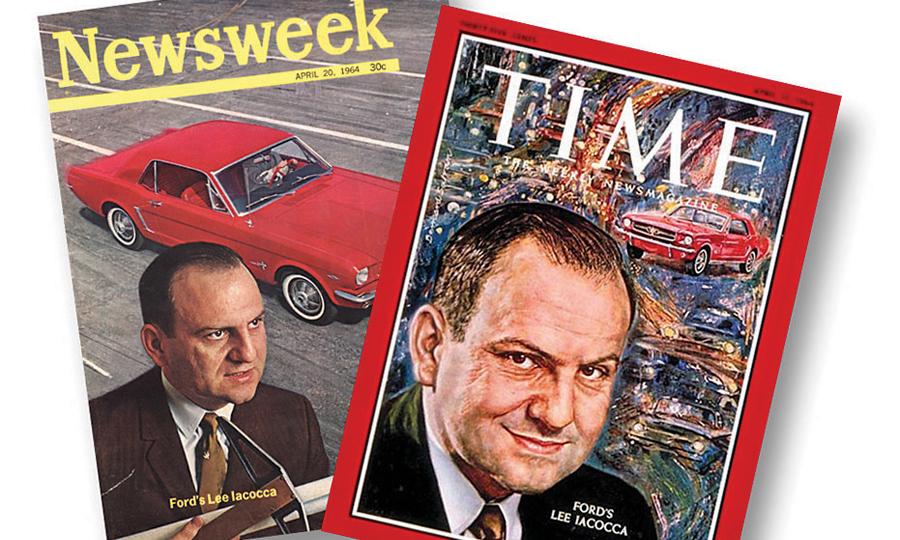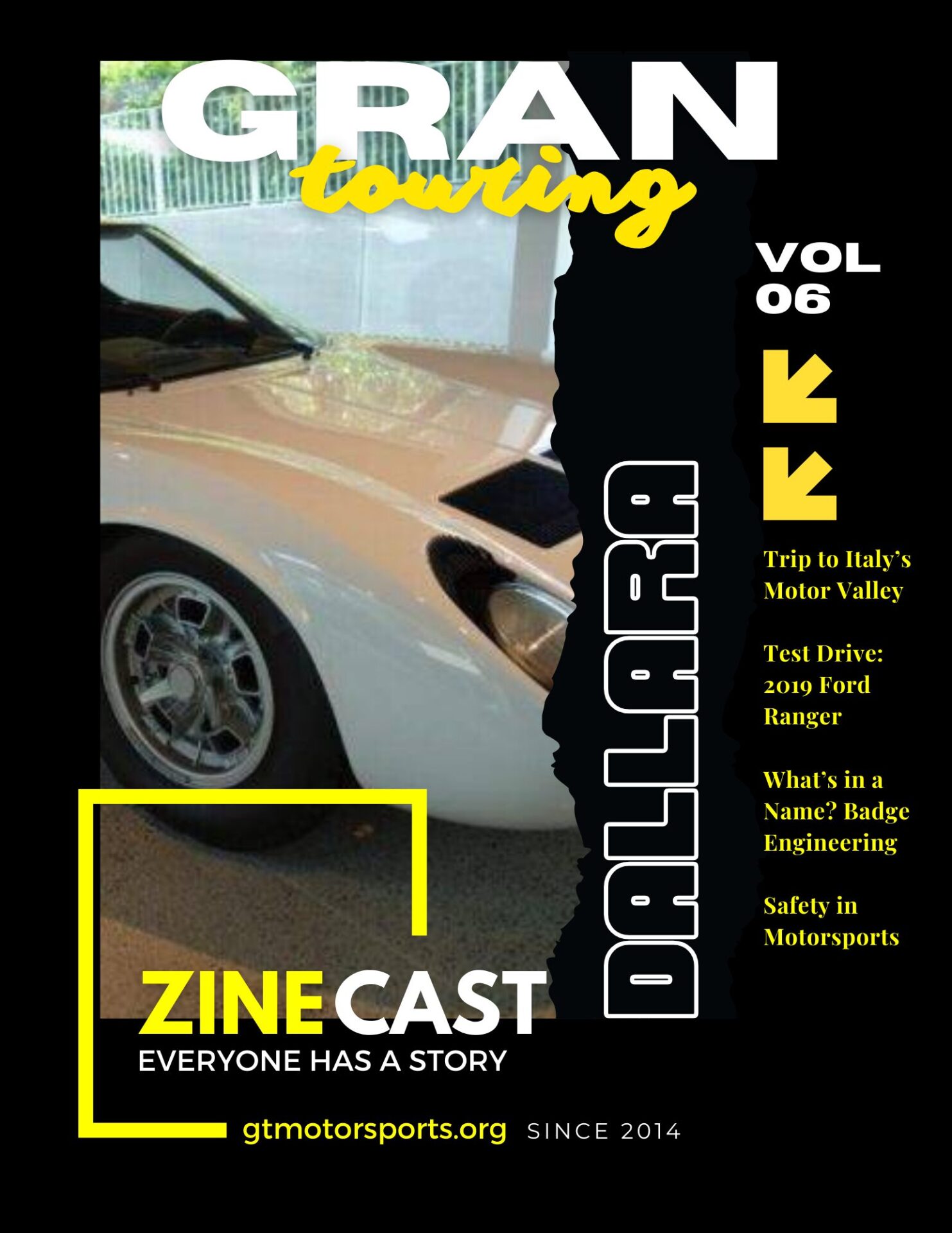I was never planning on diving deep into the history of Lee Iacocca, but after reviewing “A Faster Horse” – a documentary surrounding the creation of the 6th generation Mustang on Netflix – the film stirred up a name I hadn’t heard in years: “Lee Iacocca.” – This mysterious, legendary, near mythical name, was thrown around a lot when I was a kid.
Tune in everywhere you stream, download or listen!
But who was this masked man? – Not knowing any better I always put Lee up there with Perot, Kissinger, Rockefeller and others as “some old business dude” – pretty generic and never really knowing what people were truly on about. Later – admittedly still not knowing much – I came to realize one thing to be true: like John Z. DeLorean, Iacocca was a icon, and a car-guy. In October, as fate would have it, I stumbled across this 34 year old tome. A well kept copy of Iacocca’s autobiography was hiding along the shelves at a vintage store. And, for the low-low price of $1.00, why not grab it?
After a few days of light reading…
Every great story has a beginning, and most recounts of a person’s life all start about the same: “It was never easy for me. I was born a poor black child. I remember the days, sittin’ on the porch with my family, singin’ and dancin’ down in Mississippi…” — Steve Martin as Navin R. Johnson in “The Jerk” – 1979.
So you can imagine how this goes: Iacocca – born and raised by Italian immigrants in Pennsylvania, does some schooling and ends up working for Ford in the late 1940s. #micdrop.
Saving time, I’ll also condense Iacocca’s early years for you: after getting his mechanical engineering degree at Lehigh University and being recruited by Ford Motor Company, he and 50 other new engineers were in a year long rotational program exposing them to all aspects of how Ford operated internally. After graduating from that program, he and a few others decided they much preferred to be in sales. Iacocca knew that if he stayed in the shadows at Ford (and he may very well have designed some cool feature, part, or even a car) he would be stuck where he was. His ambition, and maybe ego, drove him to seek higher ground – out in front of the customer.
Even today, there is no formal training for sales people. They say “people are just born with it” – whatever that means – but like most people that want to move ahead, quickly, sales is the place to earn or burn. If you under promise and over deliver, management is happy and the recognition and opportunities are lavish. So, why is Lee’s story important to the automotive industry let alone motorsport?

>> Fast forward to 1961
Iacocca has steadily moved up the ranks. The overall impression depicted of Ford at the time was that the company had plateaued and lost touch with the changing market climate. The cars had become lack-luster and unattractive, most notably with the introduction of the bargain basement Ford Falcon some years earlier. By this point, Iacocca was what by today’s standards would be called a “business unit manager” and he was leading a clandestine tiger-team of engineers to develop a car that would reignite interest in the Ford brand, especially after the Edsel fiasco. In Iacocca’s opinion it was better to seek forgiveness from the upper management than beg for their permission. “Project Cougar” (the original name for the Mustang), was underway.
Iacocca is often credited as “the father of the Mustang” and as the project lead, some of that is probably true. But then credit is also given to Joe Oros, the design studio head. However, through an internal competition, Dave Ash is the engineer that put pen to paper and created the Mustang design that won over 6 other submissions. In what was typical cost cutting measures of the times, the original Mustang was built on top of a slightly modified Falcon chassis. The price point was right, the timing was right, and the Mustang took the world by storm. In retrospect, Iacocca didn’t become famous inside of Ford because of the car, but because of the sales numbers it drew: the Mustang sold 418,812 cars in its first year at a price point of $2,368 – that’s just shy of 1 billion (with a B) in gross sales – in 1965 dollars. The adage in sales is “you’re only as good as your last 2 quarters” , and Iacocca had definitely locked in his future for the next few years.
Held in some regard as a “fixer” , Iacocca was moved to the Lincoln-Mercury division. He had repeat success for the dying brand by pushing the new Cougar (based on the ‘stang) and Mark-III (based on the t-bird) to debut riding the coattails of the Mustang hype. After his “three-peat” of successes, Iacocca was eventually moved into the position of President of Ford Motor Company, making him Henry Ford II’s right hand man. Timing always seemed to be on Iacocca’s side, at least according to the picture painted in the book. For example, he dodged a bullet when interim Ford President Semon “Bunkie” Knudsen undid “the mustang mania” by making it bigger, wider, heavier, and more costly. Sales plummeted. Iacocca would also see success in Europe with the launch of the Fiesta during the oil crisis. The Fiesta was a name – that until recently – had all but disappeared from the Automotive landscape.

>>>> Fast Forward again, to 1979
Sparing you the details, Iacocca is “forced to resign” from Ford Motor Company and takes the helm of a nearly dead Chrysler Corporation a few months later. Successes with the “K cars” (the Aries being the most famous), front engine front wheel drive vehicles, boosted sales during a tough economic downturn in the early ’80s. Along with the debut of the “Dodge Caravan” – the first real “people mover” in the US that appealed to the masses in the same way the VW Type-2 “micro Bus” did in the ’60s – helped return Chrysler from the grave. Pushing to acquire AMC for their “Jeep” line was another bold and prosperous move for Chrysler under Iacocca’s tenure. It really seemed as though Iacocca had some sort of Midas touch, but in his book, he’s quite humble about all the vehicle successes and places more of the credit on managerial, organizational and cost cutting procedures he implemented inside the companies. At Chrysler, he was also very fortunate to be able to recruit from his network of former coworkers, who were also dismissed from Ford, to help right the ship.
I feel that the reconstruction period at Chrysler during Iacocca’s tenure can be easily summarized by this parody (below) about Dodge Aries owners. Take a look.
So what does this all have to do with Motorsport… two very important things: 1). Had it not been for Iacocca’s determination to prove Henry Ford II wrong about the need for a 2+2 sports car in the mid ’60s, the Mustang would never have been born. The Ford Motorsports program took on a whole new direction as popularity with the Mustang grew. Ford could now leverage another vehicle, more importantly a production vehicle, instead of something highly specialized like the GT-40 in their racing endeavors. It also gave the weekend warrior a car he could easily access, modify and take to the track.
2). Iacocca had the vision to re-partner with Carrol Shelby (as he had in the past at Ford) to green light “Project Viper” in the late ’80s. Under Iacocca’s tenure we saw the first Viper hit the streets in late 1992, and like the Mustang in ’64, it was something new, something special, something unforgettable. The Vipers development – housed in a separate facility with only 50 people assigned to it – also gave birth to the “SRT” division whose badge still graces many high performance Chrysler products today.
Both the Mustangs and the Vipers have had great racing careers, are both highly sought after, and continue to turn heads today. Had it not been for Iacocca’s vision to green light these programs and his love of all things automobiles, I believe the motorsports (and the automotive) landscape would look very different today. Can you imagine a world without the Mustang? or the Mini-van?
Unfortunately, many of the vehicles Chrysler produced during it’s resurrection aren’t something held in high regard as collectors items and even on a recent trip to GTM Sponsor: CHAZ’s Used Auto Parts, I counted four Iacocca-era Chryslers stacked together (below from left to right: the LeBaron, New Yorker, Omni and Shadow). But these cars – describe them however you like – were some of the cars that kept Chrysler from going under.

I learned a lot from this book and it hit close-to-home in many ways. I was able to expand my knowledge not just about the inner workings of the automotive industry, but also about being an effective manager. What it takes to be a “charismatic leader,” and also navigating through the turbulent world of sales. The book holds many pearls of wisdom that are still relevant today.
Looking back, Iacocca is often regarded as a titan of industry and a hero. Though I am doubtful that Mr. Iacocca – at 94 years old at the time of this article – will be reading this review, I will tip my hat to him just the same. With utmost respect and sincerest sentiment – on behalf of the folks at GTM HQ …
Thank You, Lee.
























